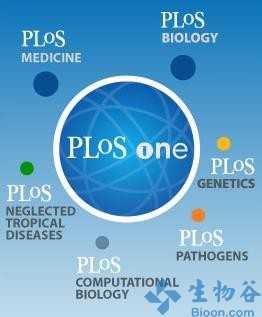PNAS:年轻人心肌细胞可以再生
2013-02-17 医学论坛网 医学论坛网
年轻人心肌细胞增殖促进了出生后心脏生长。其结果发表在了2013年1月7号至1月11号的最新的《美国国家科学院院刊》(PNAS)网络版上。 波士顿儿童医院研究人员首次发现,年轻人(婴儿、儿童、青少年)能够产生新的心肌细胞。这些发现驳斥了长期公认的观念:出生后人类心肌增长只是单一的现存细胞的扩大(而不是心肌细胞数量的增长)。同时这些研究结果也提高了科学家通过刺激心肌细胞再生治疗损伤心肌的可能性。

年轻人心肌细胞增殖促进了出生后心脏生长。其结果发表在了2013年1月7号至1月11号的最新的《美国国家科学院院刊》(PNAS)网络版上。
波士顿儿童医院研究人员首次发现,年轻人(婴儿、儿童、青少年)能够产生新的心肌细胞。这些发现驳斥了长期公认的观念:出生后人类心肌增长只是单一的现存细胞的扩大(而不是心肌细胞数量的增长)。同时这些研究结果也提高了科学家通过刺激心肌细胞再生治疗损伤心肌的可能性。
研究由波士顿儿童医院心内科的Bernhard Kühn博士主持。Kühn博士和它的团队从2009年开始研究健康人的心脏标本,这些人年龄波动范围在0到59岁。在用了很多实验室检测方法后,他们证实:这些人的心肌细胞在出生后还在分裂,在增加心肌细胞数量上起到了重要作用。心肌细胞再生速率在婴儿期最高,之后开始下降,在青少年发育急速期又开始升高,并且持续到大约20岁。这些结果强有力的说明,心肌细胞(组成心肌的细胞)增殖在健康年轻人心脏增长发挥了很大作用。
“100多年了,”Kühn说道,“人们一直在争辩出生后人类心脏的增长究竟是心肌细胞数量的增长还是本身体积的增大。”Kühn指出,早在上个世纪30年代和40年代就有研究提示,出生后心肌细胞依然可以分裂,近期在斑马鱼和乳鼠上的实验也提示一些年轻的动物心肌细胞的增长是依靠心肌细胞的分裂机制完成的,然而,多年来科学界普遍接受的观点依然是出生后人类心脏的增大仅仅是因为心肌细胞(体积)的变大所致。
Kühn的工作成果向公认的观念发出挑战,也点燃了研发心力衰竭新疗法的希望。婴儿和儿童将有可能通过提高心肌细胞的增殖,重建心肌受损部位。研究结果提示一方面一些心肌疾病(如心肌病)可能由心肌细胞异常增殖导致,另一方面可以通过刺激心肌细胞增殖来治疗年轻人的心力衰竭,这些为后续的研究指明了方向。
Kühn博士说这项结果将促进心肌细胞蓝图的产生,这个蓝图揭示人类心肌细胞的生长方式,利用这张蓝图,人们将能够研发新的儿童心力衰竭的治疗策略。

doi:10.1073/pnas.1214608110
PMC:
PMID:
Cardiomyocyte proliferation contributes to heart growth in young humans
Mariya Mollova, Kevin Bersell, Stuart Walsh, Jainy Savla, Lala Tanmoy Das, Shin-Young Park, Leslie E. Silberstein, Cristobal G. dos Remedios, Dionne Graham, Steven Colana,b, and Bernhard Kühn
The human heart is believed to grow by enlargement but not proliferation of cardiomyocytes (heart muscle cells) during postnatal development. However, recent studies have shown that cardiomyocyte proliferation is a mechanism of cardiac growth and regeneration in animals. Combined with evidence for cardiomyocyte turnover in adult humans, this suggests that cardiomyocyte proliferation may play an unrecognized role during the period of developmental heart growth between birth and adolescence. We tested this hypothesis by examining the cellular growth mechanisms of the left ventricle on a set of healthy hearts from humans aged 0–59 y (n = 36). The percentages of cardiomyocytes in mitosis and cytokinesis were highest in infants, decreasing to low levels by 20 y. Although cardiomyocyte mitosis was detectable throughout life, cardiomyocyte cytokinesis was not evident after 20 y. Between the first year and 20 y of life, the number of cardiomyocytes in the left ventricle increased 3.4-fold, which was consistent with our predictions based on measured cardiomyocyte cell cycle activity. Our findings show that cardiomyocyte proliferation contributes to developmental heart growth in young humans. This suggests that children and adolescents may be able to regenerate myocardium, that abnormal cardiomyocyte proliferation may be involved in myocardial diseases that affect this population, and that these diseases might be treatable through stimulation of cardiomyocyte proliferation.
本网站所有内容来源注明为“梅斯医学”或“MedSci原创”的文字、图片和音视频资料,版权均属于梅斯医学所有。非经授权,任何媒体、网站或个人不得转载,授权转载时须注明来源为“梅斯医学”。其它来源的文章系转载文章,或“梅斯号”自媒体发布的文章,仅系出于传递更多信息之目的,本站仅负责审核内容合规,其内容不代表本站立场,本站不负责内容的准确性和版权。如果存在侵权、或不希望被转载的媒体或个人可与我们联系,我们将立即进行删除处理。
在此留言











#PNAS#
60